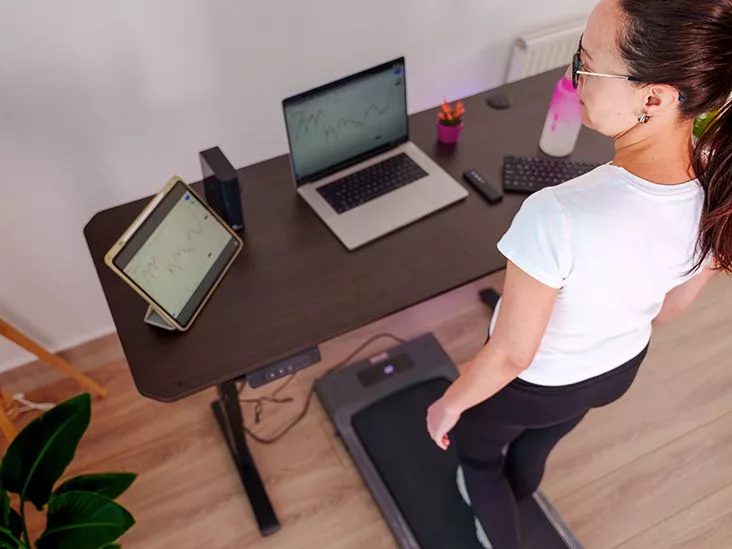Hey there! If you’ve ever stared at your calendar and felt a pang of guilt because “there’s just no time” for a workout, you’re not alone. The good news? You don’t need a whole free hour—you need a smart plan that slips movement into the cracks of a jam‑packed day. In the next few minutes (yeah, we’re already practicing what we preach), I’ll walk you through why time feels so tight, share bite‑size time management workout tricks, and give you ready‑to‑use quick workout ideas that fit any schedule. Grab a coffee, and let’s get moving together.
Why Time Feels Tight
Why do we think we “don’t have time” for workouts?
Most of us equate “exercise” with a long, sweaty session at the gym. That mental picture makes the idea feel impossible when the day is already full of meetings, kids, errands, and that never‑ending inbox. In reality, the barrier is often perception rather than reality. Stew Smith, a veteran fitness coach, argues that if you break the day into five‑minute segments, you can burn almost as many calories as an hour‑long routine—a concept he calls the “Power of Five Minutes” according to his column.
What health risks stack up?
Sitting for too long isn’t just a comfort issue; it’s a health issue. Prolonged inactivity raises the risk of hypertension, type‑2 diabetes, and even early‑onset heart disease. Mentally, a sedentary lifestyle can worsen stress and lower mood‑boosting serotonin levels. A 2024 study highlighted that people who spend more than eight hours a day seated are 20 % more likely to develop cardiovascular problems according to research cited by the Washington Post. So, even a handful of minutes moving each day can offset those risks.
Time‑Management Hacks
How can I embed micro‑sessions into a workday?
Think of your day as a series of 60‑minute blocks. In each block, carve out a 5‑minute window to stand, stretch, or do a quick set of bodyweight moves. Here’s a simple example:
- 09:00 – 5‑minute standing calf raise while you sip coffee.
- 11:00 – Desk‑side push‑up pyramid (5‑10‑15 reps).
- 14:00 – “Phone‑call lunges” – walk lunges while you’re on a call.
- 16:00 – Core blast: 30‑second plank, 30‑second rest, repeat twice.
These micro‑sessions add up to a full workout without anyone noticing you “took a break.”
Power of Five Minutes routine
Pick one movement and focus on it for the full five minutes, but add a “resting” exercise (like marching in place) to keep the heart rate up. A favorite combo looks like this:
- 30 seconds of air‑squats → 10 seconds marching on the spot.
- 30 seconds of push‑up‑to‑knee‑touch → 10 seconds shoulder rolls.
- 30 seconds of high‑knees → 10 seconds deep breaths.
- Repeat the circuit for the remaining time.
Even at a moderate pace, you’ll burn roughly 50‑80 calories per session, and the cumulative effect over a week is impressive.
Can I combine movement with other tasks?
Absolutely! The trick is to pair physical motion with an activity that already has a built‑in pause.
- Walking meetings: Instead of sitting around a conference table, suggest a stroll around the office or outdoors.
- TV‑time circuits: Do 10 squats during each commercial break.
- Stair‑step sprints: When you need to answer a quick email, sprint up a flight of stairs and walk back down.
- Cooking cardio: While waiting for water to boil, perform side‑leg lifts or calf raises.
Real‑world tip sheet
Leo Babauta, author of “Exercises for the Terminally Busy,” swears by “sneak‑in” moves like the ones above. He calls them “micro‑moments of motion” that keep the body active without feeling like a chore according to his blog.
What tools help me stay on track?
A timer, a simple spreadsheet, or a wearable can be your accountability buddy. Here’s a quick table you can copy into Google Sheets or Excel.
| Time Block | Mini‑Workout |
|---|---|
| 08:00‑09:00 | 5‑min calf‑raise + stretch |
| 10:30‑11:30 | 5‑min push‑up pyramid |
| 13:00‑14:00 | 5‑min walking‑meeting |
| 15:30‑16:30 | 5‑min core blast (plank + side‑plank) |
| 18:00‑19:00 | 5‑min body‑weight circuit |
Set a recurring alarm on your phone, and you’ll never have to wonder “when will I fit it in?” again.
Quick‑Workout Formats
What is a 5‑minute full‑body circuit?
A 5‑minute circuit is the perfect answer to “quick workout ideas” when you’re pressed for time. It blends strength and cardio, keeping the heart rate high while targeting major muscle groups.
Sample 5‑minute circuit
Perform each move for 30 seconds, rest 10 seconds, then move to the next. Complete the loop twice if you have the energy.
- Jump squats
- Push‑up with alternating knee‑to‑elbow
- Mountain climbers
- Plank shoulder taps
- Burpees (low‑impact version if needed)
Krista Stryker, a certified personal trainer, notes that this routine spikes metabolism for up to 24 hours after completion according to MindBodyGreen.
How does the classic 7‑minute HIIT work?
The 7‑minute workout became famous because it fits a full‑body routine into a coffee break. It follows a 30‑second work / 5‑second rest pattern, alternating between strength and cardio moves. The magic is in the intensity—push yourself to a perceived effort of 7‑8 out of 10.
Step‑by‑step 7‑minute plan
Here’s the most common version (feel free to swap exercises you dislike):
- Jumping jacks
- Wall sit
- Push‑up
- Abdominal crunch
- Step‑up onto a chair
- Squat
- Triceps dip on a chair
- Plank
- High knees (or marching in place)
- Lunge (alternating)
- Push‑up rotation
- Side plank (30 seconds each side)
If any movement feels too tough, modify it (e.g., wall push‑ups instead of floor push‑ups). The key is continuous movement—don’t let the timer sit idle.
When is a 10‑15‑minute strength block enough?
Sometimes you have a slightly bigger window—a lunch break or a quick trip to the gym. A 12‑15 minute strength block hits all major muscle groups, builds lean muscle, and boosts metabolism for the rest of the day.
15‑minute strength block
All you need is a pair of dumbbells (or a backpack filled with books). Perform three rounds of the following, resting 30 seconds between rounds:
| Exercise | Reps / Time |
|---|---|
| Goblet squat | 12‑15 reps |
| Single‑arm row (each side) | 10‑12 reps |
| Alternating forward lunge | 10 reps each leg |
| Overhead press | 12 reps |
| Plank | 30‑45 seconds |
Stew Smith’s “Busy Executive” ebook recommends this exact block for professionals who travel or work from home according to the guide. Adjust the weight or reps based on your current fitness level.
Behavior Hacks
How can I use habit‑stacking to remember workouts?
Habit‑stacking means tacking a new habit onto an existing one. You already brush your teeth every morning—add a 5‑minute plank right after you finish. The cue (brushing teeth) triggers the new habit (plank), making it easier to remember.
Personal story suggestion
When I first tried habit‑stacking, I paired my morning coffee brew with 10 air‑squats. The ritual felt goofy at first, but after a week I couldn’t imagine starting the day without it. Share your own cue‑pairing ideas in the comments—maybe it’s “after I log into Zoom” or “right before I check my email.”
What’s the easiest way to track progress without obsessing?
Tracking doesn’t have to be a daily journal. A simple weekly log that notes total minutes moved and a quick self‑rating (1‑10) is enough. The visual of a growing column chart can be surprisingly motivating.
Quick‑track template
Copy the table below into a spreadsheet and fill it out each Sunday:
| Week | Total Minutes Moved | Energy Rating (1‑10) |
|---|---|---|
| 1 | 45 | 6 |
| 2 | 55 | 7 |
| 3 | 65 | 8 |
| 4 | 75 | 9 |
When you see the numbers climb, you’ll feel that extra boost to keep going.
Safety First
What injuries are most common when you rush a short session?
When you try to squeeze a high‑intensity burst into five minutes, the temptation is to sacrifice form for speed. Common mishaps include:
- Rounded lower back during fast squats.
- Shallow knee bends leading to knee strain.
- Locked elbows on push‑ups causing wrist pain.
Physical‑therapy experts recommend keeping the spine neutral and only moving through a comfortable range of motion, even if it means doing fewer reps according to Stew Smith’s advice.
How do I scale intensity safely?
The easiest way is to use the Rate of Perceived Exertion (RPE) scale. Aim for a 7‑8 on a 1‑10 scale during the work intervals. If you can speak full sentences, you’re probably under‑working; if you’re gasping for air, you might be overdoing it.
Progression table
| Level | Reps / Time | Notes |
|---|---|---|
| Beginner | 20‑seconds work, 10‑seconds rest | Focus on perfect form. |
| Intermediate | 30‑seconds work, 10‑seconds rest | Add light weights. |
| Advanced | 40‑seconds work, 5‑seconds rest | Increase tempo, add plyometrics. |
Weekly Blueprint
Week‑in‑the‑Life snapshot
Here’s a sample schedule that mixes micro‑sessions, a full 7‑minute HIIT, and a strength block. Feel free to swap days to match your own rhythm.
Printable calendar suggestion
| Day | Morning | Midday | Evening |
|---|---|---|---|
| Monday | 5‑min calf raises | 7‑minute HIIT (15 min break) | Stretch & walk |
| Tuesday | 5‑min push‑up pyramid | Lunch‑hour 5‑min core | Light yoga |
| Wednesday | 5‑min squat burst | Walk‑meeting 10 min | Strength block (15 min) |
| Thursday | 5‑min plank series | Quick stair‑sprints | Family walk |
| Friday | 5‑min jumping jacks | 7‑minute HIIT (break) | Relaxed stretch |
| Saturday | Rest or gentle yoga | 15‑minute strength block | Outdoor activity |
| Sunday | Active recovery (slow walk) | Plan next week | Early bedtime |
Download a PDF version of this calendar (link in the sidebar) and print it on your fridge. Seeing the plan in black‑and‑white makes it harder to skip.
Conclusion
There you have it—an arsenal of fit schedule tips, quick workout ideas, and real‑world tricks that turn a chaotic calendar into a fit one. Remember, the goal isn’t to become a gym rat overnight; it’s to weave tiny, sustainable movements into the fabric of your day. Start with one 5‑minute micro‑session tomorrow, add a habit stack, and watch how quickly those minutes add up. Your body, mind, and future self will thank you.
What’s the first micro‑workout you’ll try? Drop a comment below, share your favorite habit‑stack, or ask any questions—you’re not alone on this journey. Let’s keep each other motivated and make every minute count!


















Leave a Reply
You must be logged in to post a comment.